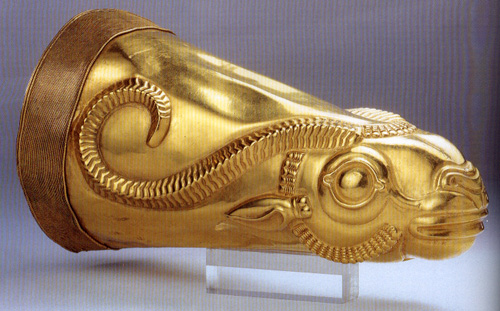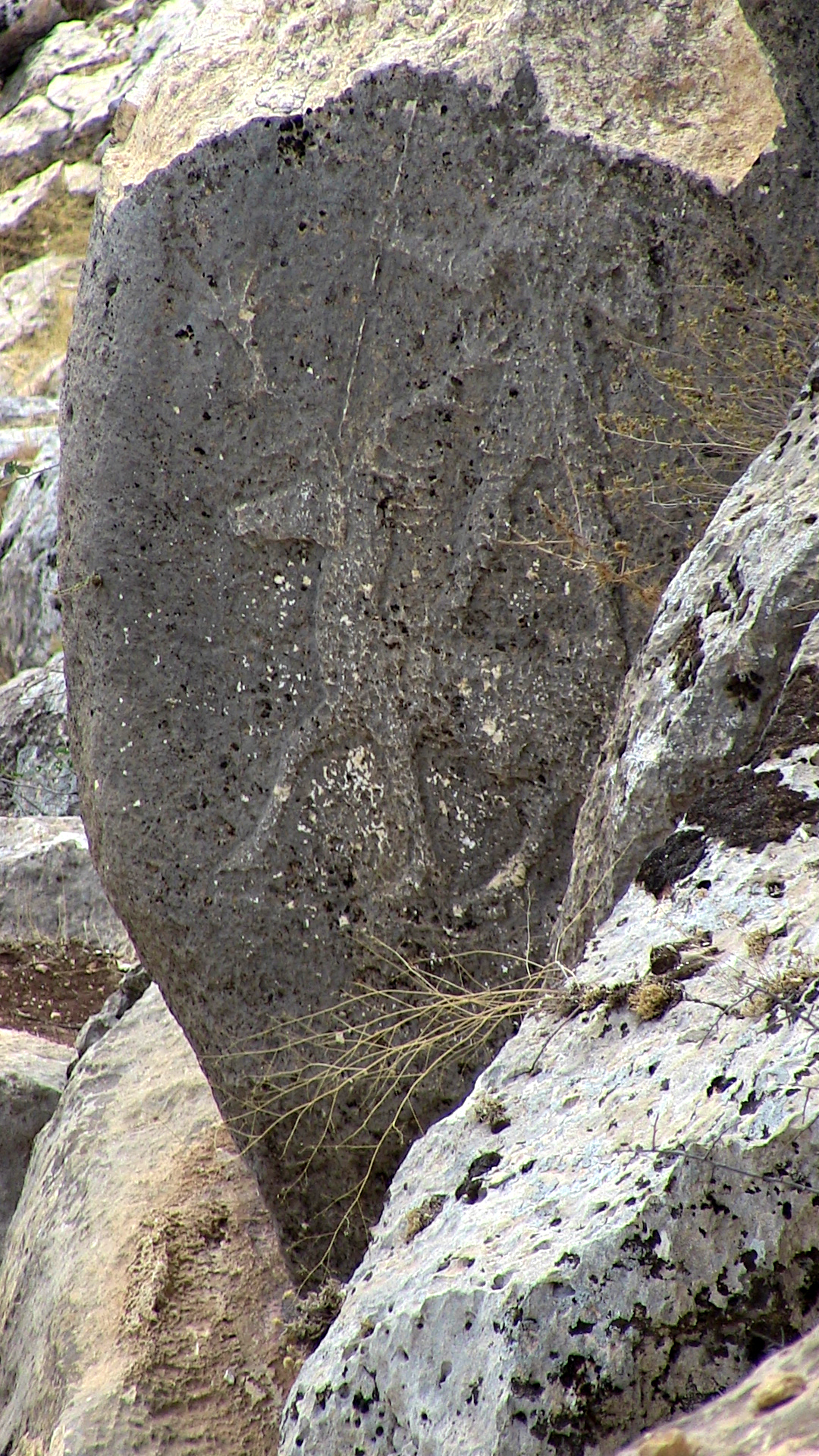|
Kurunta (god)
Kurunta (Cuneiform: ) is the Hittite god of wild animals and hunting. Kurunta's Insignia was the deer. He became king of gods after he had thrown Tarhun down from the sky. The god rebel forces humanity against the gods and even does not care about the powerful gods. Because of the wish of gods to get sacrifices furthermore without getting them Enki and Kumarbi unite against Kurunta. With help of Nara-Napsara, the brother of A'as from the underworld, they force all animals and the mountain god Nasalma against Kurunta. After that Kurunta is killed by Tarhun and Ninurta so he accepts Tarhun's sovereignty. Kurunta takes part at the conference of gods after Telipinu's return. He is also the saving god of Carchemish. See also *Runtiya *Innara Literature * Volkert Haas Volkert may refer to: People *Edward Charles Volkert (1871–1935), American painter *Georg Volkert (1945–2020), German footballer * Stephan Volkert (born 1971), German rower *Volkert Doeksen (born 1963), Dutch mo ... [...More Info...] [...Related Items...] OR: [Wikipedia] [Google] [Baidu] |
Rhyton En Forme De Cerf Hittite, Exposition Royaumes Oubliés, Louvre 2019
A rhyton (plural rhytons or, following the Greek plural, rhyta) is a roughly conical container from which fluids were intended to be drunk or to be poured in some ceremony such as libation, or merely at table. A rhyton is typically formed in the shape of an animal's head. Items were produced over large areas of ancient Eurasia, especially from Persia to the Balkans. Many have an opening at the bottom through which the liquid fell; others did not, and were merely used as drinking cups, with the characteristic that they could not usually be set down on a surface without spilling their contents. The English word ''rhyton'' originates in the ancient Greek word ' (''rhy̆tón ''or'' rhŭtón''). The conical rhyton form has been known in the Aegean region since the Bronze Age, or the 2nd millennium BC. However, it was by no means confined to that region. Similar in form to, and perhaps originating from, the drinking horn, it has been widespread over Eurasia since prehistoric tim ... [...More Info...] [...Related Items...] OR: [Wikipedia] [Google] [Baidu] |
Ninurta
, image= Cropped Image of Carving Showing the Mesopotamian God Ninurta.png , caption= Assyrian stone relief from the temple of Ninurta at Kalhu, showing the god with his thunderbolts pursuing Anzû, who has stolen the Tablet of Destinies from Enlil's sanctuary (Austen Henry Layard ''Monuments of Nineveh'', 2nd Series, 1853) , parents=Enlil and Ninhursag As Urash, An , deity_of=God of agriculture, hunting, and war , abode=Eshumesha temple in NippurLater Kalhu, during Assyrian times , symbol=Plow and perched bird , consort= ''As Ninurta:'' Gula''As Ninĝirsu:'' Bau , children= , planet=Saturn, Mercury , mount= Beast with the body of a lion and the tail of a scorpion , equivalent1_type = Caananite , equivalent1 = Attar , equivalent2_type = Eblaite , equivalent2 = Aštabi Ninurta ( sux, : , possible meaning "Lord fBarley"), also known as Ninĝirsu ( sux, : , meaning "Lord fGirsu"), is an ancient Mesopotamian god associated with farming, healing, hunting, law, ... [...More Info...] [...Related Items...] OR: [Wikipedia] [Google] [Baidu] |
Fred Woudhuizen
Frederik Christiaan Woudhuizen (Zutphen, 13 February 1959 – Heiloo, 28 September 2021) was an independent scholar who studied ancient Indo-European languages, hieroglyphic Luvian/Luwian, and Mediterranean protohistory. He was the former editor of ''Talanta, Proceedings of the Dutch Archaeological and Historical Society''. Life Fred Woudhuizen graduated from high school in 1977. He finished his history studies in 1985 with an exam in Ancient History and specializing in Prehistory and Early History of the Mediterranean region. His education included Provincial Roman Archeology and the study of Classical languages, including Latin and Greek, as well as Luwian languages, Italian dialects and Mycenaeology. In 2006 he obtained his doctorate from Erasmus University Rotterdam with a Dissertation on ''The Ethnicity of the Sea Peoples''. From 1986 to 1989 and 1992 to 1995 Woudhuizen was editor of the Dutch journal ''Talanta, Proceedings of the Dutch Archaeological and Historical Socie ... [...More Info...] [...Related Items...] OR: [Wikipedia] [Google] [Baidu] |
Volkert Haas
Volkert may refer to: People *Edward Charles Volkert (1871–1935), American painter *Georg Volkert (1945–2020), German footballer * Stephan Volkert (born 1971), German rower *Volkert Doeksen (born 1963), Dutch money manager *Volkert van der Graaf (born 1969), Dutch assassin *Volkert Kraeft (born 1941), German actor *Volkert Merl (born 1940), German racing driver *Volkert Overlander (1570–1630), Dutch noble, jurist, ship-owner and merchant *Volkert Simon Maarten van der Willigen (1822–1878), Dutch mathematician and physicist Companies *Volkert, Inc., a consulting firm headquartered in Mobile, Alabama Buildings *Volkert Van Buren House Volkert Van Buren House is a historic home located near Fulton, Oswego County, New York, Fulton in Oswego County, New York. It is a Federal architecture, Federal style structure constructed about 1832. ''See also:'' It was listed on the Nation ..., historic home in Oswego County, New York Surnames from given names {{Disambiguation, gi ... [...More Info...] [...Related Items...] OR: [Wikipedia] [Google] [Baidu] |
Innara
Innara (Cuneiform: ) is a Hittite god of woods and fields. Inar is mentioned in the Hahhima-myth. There Tarhun sends Inar to look for sun god Istanu, but the ice devil Hahhima freezes Inar. Inar's tasks are similar to the tasks of the god of wild animals and hunting, Kurunta Kurunta (Cuneiform: ) was younger son of the early 13th century BC Hittite king Muwatalli II and cousin of Tudhaliya IV. Kurunta was thereby a Hittite prince and king of Tarhuntassa country. It has been suggested that he may have captured the Hi .... References Bibliography * Piotr Taracha: ''Religions of Second Millennium Anatolia''. Harrassowitz Verlag, Wiesbaden 2009, {{ISBN, 978-3-447-05885-8. Hittite deities Hittite mythology ... [...More Info...] [...Related Items...] OR: [Wikipedia] [Google] [Baidu] |
Runtiya
__NOTOC__ Runtiya was the Luwian god of the hunt, who had a close connection with deer. He was among the most important gods of the Luwians. Name The name was written in the Luwian cuneiform of the Bronze Age as , which can be read as *Runtiya or *Kruntiya. In Hieroglyphic Luwian of the Iron Age, he was named "Runtiya" and his name was generally written with the image of a deer or antlers, as (DEUS) CERVUS ("God deer"). The name is possibly derived from a word for "horn" or "antler", but all the etymologies which have been proposed to date are problematic. The relationship between Runtiya and the Kurunta is disputed. Some scholars argue that the two gods are identical and reconstruct an older Luwian form of the name, *''Krunti(ya)-''; others suggest that there was a pre-Indo-European Anatolian divinity which the Luwian Runtiya and the Hittite Kurunta had developed. Runtiya was often invoked in personal names: the oldest example derives the 18th century BC Kültepe, where a man ... [...More Info...] [...Related Items...] OR: [Wikipedia] [Google] [Baidu] |
Carchemish
Carchemish ( Turkish: ''Karkamış''; or ), also spelled Karkemish ( hit, ; Hieroglyphic Luwian: , /; Akkadian: ; Egyptian: ; Hebrew: ) was an important ancient capital in the northern part of the region of Syria. At times during its history the city was independent, but it was also part of the Mitanni, Hittite and Neo-Assyrian Empires. Today it is on the frontier between Turkey and Syria. It was the location of an important battle, about 605 BC, between the Babylonians and Egyptians, mentioned in the Bible (Jer. 46:2). Modern neighbouring cities are Karkamış in Turkey and Jarabulus in Syria (also Djerablus, Jerablus, Jarablos, Jarâblos); the original form of the modern toponym seems to have been Djerabis or Jerabis, likely derived from Europos, the ancient name of the Hellenistic-Roman settlement. Geography of the site Carchemish is now an extensive set of ruins (90 hectares, of which 55 lie in Turkey and 35 in Syria), located on the West bank of Euphrates Riv ... [...More Info...] [...Related Items...] OR: [Wikipedia] [Google] [Baidu] |
Telipinu (god)
Telipinu (Cuneiform: , ; Hattic: ''Talipinu'' or ''Talapinu'', "Exalted Son")Beckman, Gary. "Telipinu" in ''Reallexicon der Assyriologie und Vorderasiatischen Archäologie'', Vol. 13. 2012 was a Hittite god who most likely served as a patron of farming, though he has also been suggested to have been a storm god or an embodiment of crops. He was a son of the weather god Tarḫunna ( Taru) and the solar goddess Arinniti in the system of their mythology. His wife was the goddess Ḫatepuna, though he was also paired with and Kataḫḫa at various cultic centres. Telipinu was honored every nine years with an extravagant festival in the autumn at Ḫanḫana and Kašḫa, wherein 1000 sheep and 50 oxen were sacrificed and the symbol of the god, an oak tree, was replanted. He was also invoked formulaically in a daily prayer for King Muršili II during the latter's reign. An ancient Hittite myth about Telipinu, the ''Telipinu Myth'', describes how his disappearance causes all fertilit ... [...More Info...] [...Related Items...] OR: [Wikipedia] [Google] [Baidu] |
Hittite Cuneiform
Hittite cuneiform is the implementation of cuneiform script used in writing the Hittite language. The surviving corpus of Hittite texts is preserved in cuneiform on clay tablets dating to the 2nd millennium BC (roughly spanning the 17th to 12th centuries BC). Hittite orthography was directly adapted from Old Babylonian cuneiform. What is presented below is Old Akkadian cuneiform, so most of the characters shown here are not, in fact, those used in Hittite texts. For examples of actual Hittite cuneiform, see The Hittite Grammar Homepage or other similarly reputable sources. The ''Hethitisches Zeichenlexikon'' ("Hittite Sign List" commonly referred to as ''HZL'') of Rüster and Neu lists 375 cuneiform signs used in Hittite documents (11 of them only appearing in Hurrian and Hattic glosses), compared to some 600 signs in use in Old Assyrian. About half of the signs have syllabic values, the remaining are used as ideograms or logograms to represent the entire word—much as the char ... [...More Info...] [...Related Items...] OR: [Wikipedia] [Google] [Baidu] |
Kumarbi
Kumarbi was an important god of the Hurrians, regarded as "the father of gods." He was also a member of the Hittite pantheon. According to Hurrian myths, he was a son of Alalu, and one of the parents of the storm-god Teshub, the other being Anu (the Mesopotamian sky god). His cult city was Urkesh. Syncretism God lists from Ugarit equate Kumarbi with the Mesopotamian Enlil and the local El; other sources equate him with the Syrian Dagan as well, and he was even called "the Dagan of the Hurrians." It's also been proposed that a Hurro-Akkadian god list from Emar equates Ishtaran with him for uncertain reasons. Due to particularly close syncretism between Dagan and Kumarbi due to their shared role as "fathers of gods" in Syria, Dagan's wife Shalash was also viewed as his spouse, though he has other consorts in myths: an unnamed mortal woman and Sertapsuruhi, daughter of the sea god. Kumarbi cycle Kumarbi is known from a number of mythological texts, sometimes summarized unde ... [...More Info...] [...Related Items...] OR: [Wikipedia] [Google] [Baidu] |




